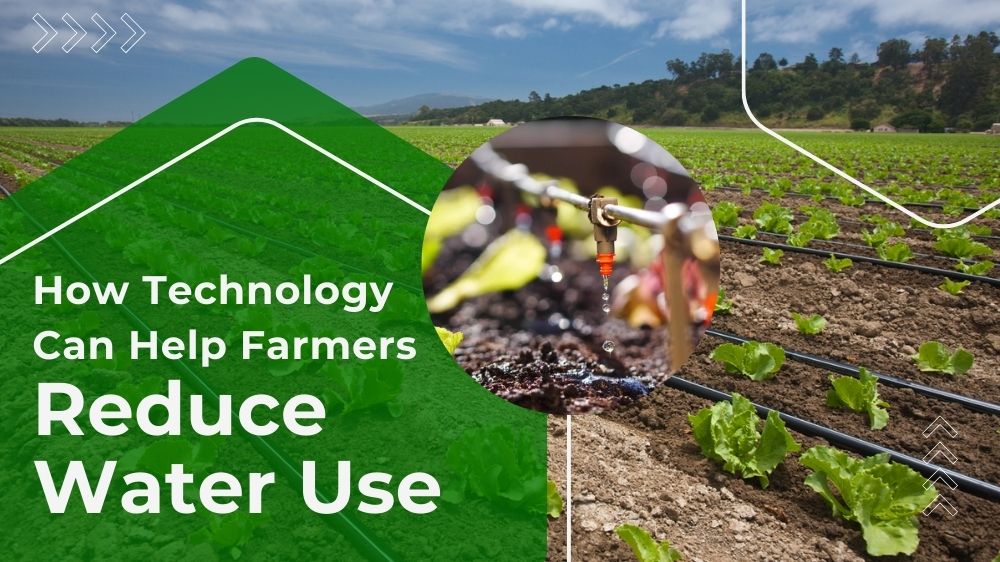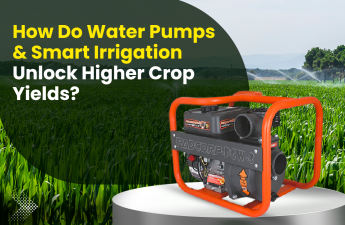Water conservation is crucial for small farmers because it can be difficult to find water at times. It may sound surprising that land uses nearly 70% of our freshwater resources. That is quite a bit! But fear not—technology is on hand to support. Small farmers can grow lots of healthy crops with less water by using new tools and gadgets. This guide will cover the ways in which these new technologies can support small-scale farmers in conserving water and sustaining their activities. So let us examine how industry is reshaping the lives of small farmers worldwide!
Water is important to the growth of crops. It acts similarly to food for plants, but occasionally there isn’t enough water for everyone. That is the role of technology. Using the specific sensors, farmers can precisely determine when their plants require water, preventing wastage. Moreover, there are intelligent irrigation systems that save a lot of water by only watering the plants when required. In addition, some farmers are using improved soil types that retain water longer, requiring less. These are just a few instances of how technology is assisting small farmers in making more informed water-related decisions. Thus, small farmers can grow more food while using less water by utilizing these innovative tools, which is fantastic for everyone.
Farmers’ Ways of Saving Water
Farming needs water. Water demand grows as the population increases and the need for food gets higher. Saving water is necessary in agriculture so that farmers can produce more with less.
One suggestion is to create crops that are not dependent on too much watering; drought-tolerant crops. In addition, some scientists have developed new types of plants that yield higher quantities of food when irrigated similarly to others.
Here are several methods for conserving water for farmers:
1. Drip irrigation can deliver water directly to plant roots thus eliminating evaporation or runoff.
2. Wireless soil sensors detect moisture content around plants, this helps to determine whether it is necessary to initiate irrigation or not.
3. Weather monitoring devices provide information about the required amount of water for crops based on prevailing climatic conditions.
Nevertheless, there are several challenges associated with these strategies, especially among small-scale farmers in developing countries who lack the financial capability to acquire such technologies as well as knowledge and access to relevant information services particularly where there is limited network coverage in far-flung areas.
The Smart Irrigation Systems Revolution
Water conservation is one of the many benefits of smart irrigation systems which also enhance farming.Soil moisture levels are detected by wireless sensors implanted in it and the results are sent to irrigation systems.With this information, farmers can supply crops with water when and where necessary according to prevailing conditions.Water content is measured by soil moisture sensors that relay their findings to a central control system.In comparison with timed systems, overwatering can be reduced by up to 30% through the adjustment of irrigation levels by the control unit.Over-watering is both wasteful and harmful to plants. Due to lack of oxygen, the plant eventually dies.Using wireless technology farmers can now easily monitor things attached to the process. For example, irrigation systems.Even while away from their farms farmers still have access through mobile devices for soil condition tracking and making relevant corrections.Smart irrigation systems provide sustainable methods for saving water resources used in agriculture.These systems ensure that water is used sustainably not only benefiting the farmer but also conserving the environment.
The Role of Technology in Farmer’s Water Conservation
Wireless technologies are a reason behind irrigation innovation and saving water in agriculture. Farmers can manage their water resources effectively and improve crop yields thanks to developments like soil moisture sensors, weather stations, and smartphone apps.
1. Low-cost soil sensors linked with apps that can be downloaded onto smartphones are enabling small-scale farmers in developing countries to take control over their own irrigation needs according to
Case Study focuses on moisture content, temperature, and rainfall data collected by this technology in agriculture tools to determine the exact amounts required for watering plants at different stages based on their findings which will alert a farmer through an app when he should do so along with how long each session ought to last. Trials carried out across places including India or parts of South Africa revealed savings of up to forty percent through the utilisation of such a method.
Conclusion
To sum up, the application of wireless technology especially the one Pad Corp ensures and smartphone apps are successful methods for water saving and improving irrigation efficiency. Therefore, it can be said that the technology in farming can help solve problems caused by the lack of this natural resource as shown by examples. In addition to helping growers these creative answers promote sustainable agriculture and protect the environment as well.



